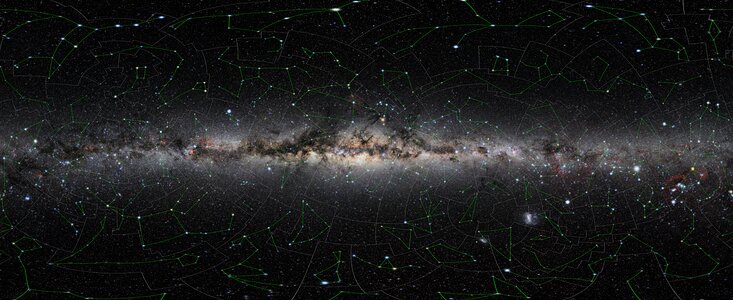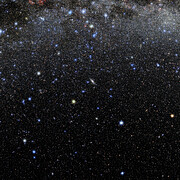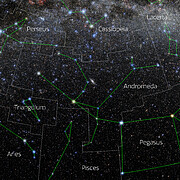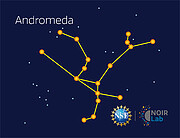NSF NOIRLab Launches 88 Constellations Project
New web pages dedicated to mapping our night sky and exploring its wonders
23 December 2024
NSF NOIRLab is launching the 88 Constellations project — a collection of free, high resolution, downloadable images of all 88 western IAU-recognized constellations. The project also includes the release of the largest open-source, freely available all-sky photo of the night sky.
Today NSF NOIRLab, funded by the U.S. National Science Foundation, in collaboration with ESA/Hubble, is releasing the 88 Constellations project. This complete collection of free, high resolution, downloadable images of all 88 western IAU-recognized constellations serves as an educational archive that can be used on the individual and scholastic levels. The project also includes the release of the largest open-source, freely available all-sky photo of the night sky.
The photographer behind this collection of stunning, high-quality images is German astrophotographer Eckhard Slawik. The images were taken on film and each panel comprises two separate exposures, one with and one without a diffuser filter to allow the stars’ colors to shine through.
All products include a comprehensive description of the constellation and its historic origins, as well as the corresponding standardized stick figure, outline drawing, finder chart and description of the constellation’s most prominent deep-sky objects. Existing astronomical images of such deep-sky objects, captured with various NSF NOIRLab telescopes, are also included. Downloadable flash cards and other audiovisual and educational materials make it easy to bring the constellations into the classrooms.
Also being released today is the largest open-source, freely available all-sky photo of the night sky. With 40,000 pixels, this is arguably one of the best such images ever made. The colossal sky-scape was compiled using images taken by Slawik from the best and darkest locations around the globe: Germany (Waldenburg), Spain (Tenerife, La Palma), Namibia and Chile.
The 88 Constellations images are open for exploration by all ages, and are especially suitable for use in planetariums and museums. Visit the project webpage to become familiar with all 88 constellations and see how many you can spot in your night sky.
More information
NSF NOIRLab, the U.S. National Science Foundation center for ground-based optical-infrared astronomy, operates the International Gemini Observatory (a facility of NSF, NRC–Canada, ANID–Chile, MCTIC–Brazil, MINCyT–Argentina, and KASI–Republic of Korea), NSF Kitt Peak National Observatory (KPNO), NSF Cerro Tololo Inter-American Observatory (CTIO), the Community Science and Data Center (CSDC), and NSF–DOE Vera C. Rubin Observatory (in cooperation with DOE’s SLAC National Accelerator Laboratory). It is managed by the Association of Universities for Research in Astronomy (AURA) under a cooperative agreement with NSF and is headquartered in Tucson, Arizona.
The scientific community is honored to have the opportunity to conduct astronomical research on I’oligam Du’ag (Kitt Peak) in Arizona, on Maunakea in Hawai‘i, and on Cerro Tololo and Cerro Pachón in Chile. We recognize and acknowledge the very significant cultural role and reverence of I’oligam Du’ag- to the Tohono O’odham Nation, and Maunakea to the Kanaka Maoli (Native Hawaiians) community.
Contacts
Josie Fenske
Jr. Public Information Officer
NSF NOIRLab
Email: josie.fenske@noirlab.edu






